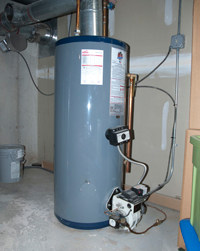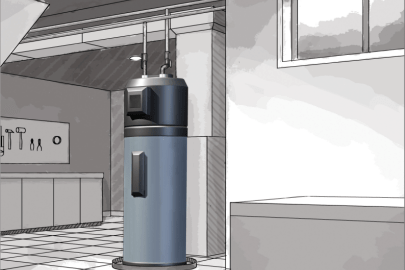How to Keep Your Home's Hot Water System in Good Condition
How to Keep Your Home's Hot Water System in Good Condition
Blog Article
Do you find yourself hunting for answers involving How to Maintain Your Water Heater & Prolong its Life?

Warm water is necessary for everyday comfort, whether it's for a refreshing shower or cleaning meals. To guarantee your warm water system runs efficiently and lasts much longer, routine maintenance is vital. This short article gives practical pointers and understandings on just how to keep your home's hot water system to avoid disturbances and expensive repairs.
Introduction
Preserving your home's warm water system might appear daunting, however with a couple of simple steps, you can ensure it runs smoothly for many years to come. This overview covers everything from comprehending your hot water system to DIY maintenance pointers and recognizing when to employ professional aid.
Significance of Keeping Your Hot Water System
Normal upkeep not only prolongs the lifespan of your hot water system yet also guarantees it operates successfully. Overlooking upkeep can lead to reduced performance, higher power bills, and also early failure of the system.
Indications Your Warm Water System Requirements Upkeep
Knowing when your warm water system needs interest can stop major problems. Watch out for indicators such as inconsistent water temperature level, strange noises from the heating unit, or corroded water.
Understanding Your Hot Water System
Prior to diving into maintenance tasks, it's practical to understand the basic elements of your warm water system. Typically, this consists of the hot water heater itself, pipelines, anode poles, and temperature controls.
Monthly Maintenance Tasks
Regular monthly checks can help catch minor problems before they intensify.
Flushing the Water Heater
Flushing your water heater eliminates sediment accumulation, enhancing effectiveness and prolonging its life.
Checking and Replacing Anode Rods
Anode rods prevent corrosion inside the storage tank. Checking and replacing them when broken is crucial.
Inspecting and Adjusting Temperature Settings
Adjusting the temperature level settings ensures optimal performance and safety.
DIY Tips for Maintenance
You can perform numerous maintenance jobs on your own to maintain your warm water system in top condition.
Checking for Leaks
Frequently check pipes and connections for leaks, as these can lead to water damages and greater expenses.
Checking Pressure Relief Valves
Testing the pressure safety valve ensures it works correctly and prevents excessive stress buildup.
Shielding Pipelines
Insulating warm water pipelines decreases heat loss and can save power.
When to Call an Expert
While do it yourself maintenance is beneficial, some problems call for specialist know-how.
Complicated Concerns Requiring Expert Aid
Instances consist of major leaks, electric issues, or if your water heater is consistently underperforming.
Regular Expert Upkeep Benefits
Specialist maintenance can consist of extensive evaluations, tune-ups, and ensuring conformity with safety standards.
Verdict
Regular upkeep of your home's hot water system is essential for effectiveness, longevity, and expense savings. By adhering to these ideas and knowing when to look for specialist assistance, you can ensure a trustworthy supply of warm water without unforeseen disturbances.
How to Maintain an Instant Hot Water Heater
Before tinkering with your hot water heater, make sure that it’s not powered on. You also have to turn off the main circuit breaker and shut off the main gas line to prevent accidents. Also turn off the water valves connected to your unit to prevent water from flowing into and out of the appliance. 2. When you’re done, you have to detach the purge valves’ caps. These look like the letter “T†and are situated on either side of the water valves. Doing so will release any pressure that has accumulated inside the valves while at the same time avoid hot water from shooting out and burning your skin. 3. When the purge valves’ caps are removed, you have to connect your hosing lines to the valves. Your unit should have come with three hoses but if it didn’t, you can purchase these things from any hardware or home repair shops. You can also get them from retail stores that sell water heating systems. Read the user’s manual and follow it to complete this task properly. When the hosing lines are connected, open the purge port’s valves. 4. You should never use harsh chemical cleaners or solutions when cleaning your unit. Make use of white vinegar instead. It should be undiluted and you’ll probably use about 2 gallons. 5. Now flush your water heater. This task should probably take about 40 minutes. We can’t give you specific directions for this because the procedure is carried out depending on the type, model and brand of your heater. With that being said, refer to the user’s manual. 6. When you’re done draining the unit, you have to turn off the purge port valves again. Remove the hosing lines that you earlier installed on each of the water valves. Put the valve caps (purge port) back in their respective places and be very careful so as not to damage the rubber discs that are found inside these caps. 7. Now that everything’s back in place, check your user’s manual again to find out how to reactivate your water heating system. 8. Once it is working, turn one of your hot water faucets on just to let air pass through the heater’s water supply pipes. Leave the tap on until water flows smoothly out of it. https://www.orrplumbing.com/blog/2014/september/how-to-maintain-an-instant-hot-water-heater/

I have been very interested by What Kind of Maintenance Do Water Heaters Need? and I hope you appreciated my blog entry. Sharing is caring. Helping others is fun. Kudos for your time. Don't hesitate to come by our blog back soon.
Request Your Service Report this page